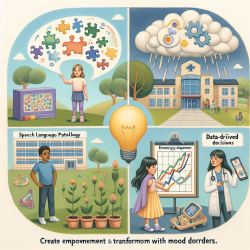As practitioners dedicated to improving the outcomes for children, it is crucial to stay informed about the latest research and implement findings that can enhance our practice. The study "Matching response to need: What makes social networks fit for providing bereavement support?" provides valuable insights that can help us refine our approaches to supporting bereaved individuals. Here, we explore key findings and their implications for practice.
Understanding the Goodness of Fit Framework
The study highlights the importance of the "goodness of fit" between the bereaved person's needs and the support offered by their social networks. The framework identifies several critical factors:
- Source: The origin of the support, whether from family, friends, community, or professionals.
- Amount: The quantity of support provided, which needs to be balanced to avoid overwhelming or insufficient support.
- Timing: The period when support is offered, recognizing that needs may change over time.
- Function: The type of support provided, such as emotional, informational, or practical assistance.
- Structure: The organization and interconnectedness of the support network.
Key Findings and Implications for Practice
The study's qualitative analysis revealed that the amount, timing, function, and structure of support are interrelated and significantly impact its perceived helpfulness. Here are some actionable insights for practitioners:
Amount of Support
Too much support can be overwhelming, while too little can leave the bereaved feeling abandoned. Practitioners should assess the individual's needs and tailor the support accordingly. Encourage the community and family members to offer balanced support and be sensitive to the bereaved person's capacity to receive it.
Timing of Support
Support needs can evolve over time. Immediate support is often appreciated, but ongoing support is equally important. Practitioners should facilitate continuous engagement with the bereaved, ensuring that support is available when it is most needed.
Function of Support
Different types of support serve various functions. Emotional support provides comfort, while informational support offers guidance. Practitioners should identify the specific needs of the bereaved and coordinate the appropriate type of support, whether it be practical help or opportunities for social comparison through peer support groups.
Structure of Support Networks
The interconnectedness of support networks can affect their effectiveness. Encourage the development of robust community networks that can provide comprehensive support. Training community members in network mapping and development can enhance the natural support systems already in place.
Implementing a Compassionate Communities Approach
The study endorses the compassionate communities model, which integrates community networks with professional services to provide sustainable bereavement care. Practitioners should advocate for and participate in building compassionate communities, where support is normalized and readily available.
Conclusion
Incorporating these research findings into practice can significantly improve the support provided to bereaved individuals. By understanding and applying the goodness of fit framework, practitioners can better meet the needs of the bereaved and contribute to their well-being.
To read the original research paper, please follow this link: Matching response to need: What makes social networks fit for providing bereavement support?










